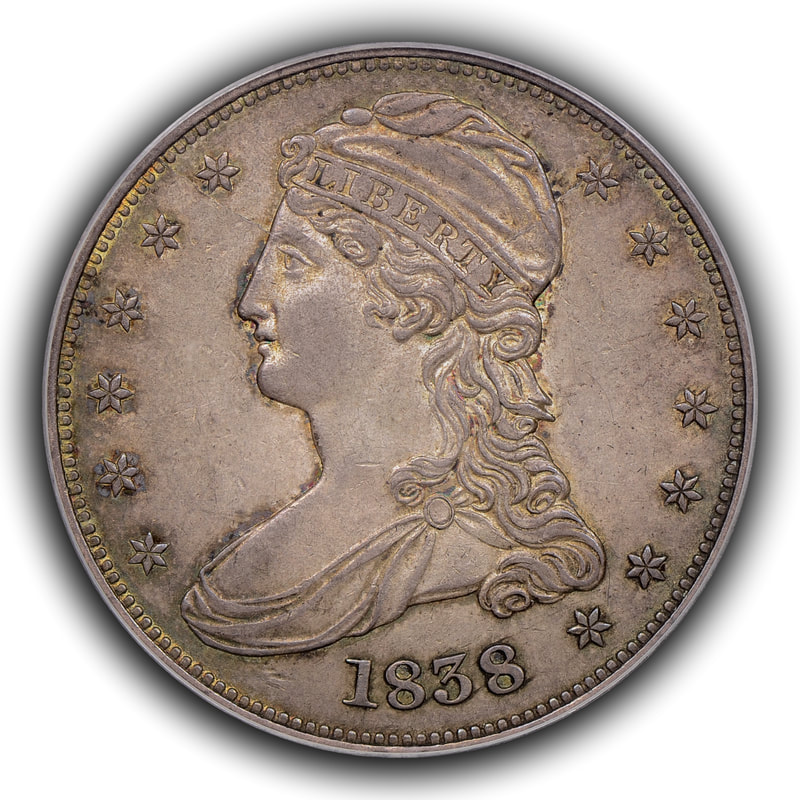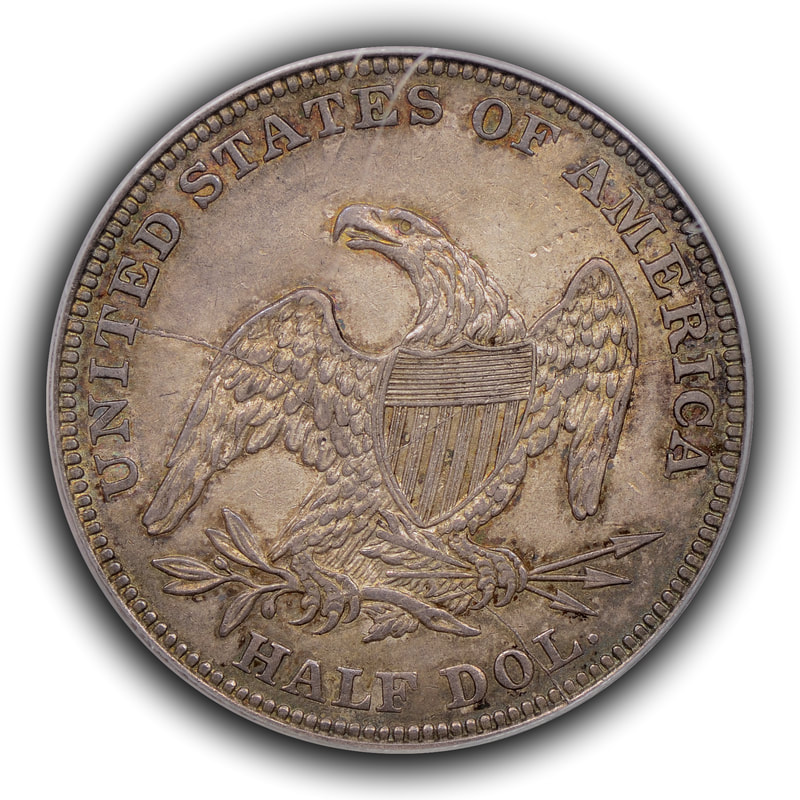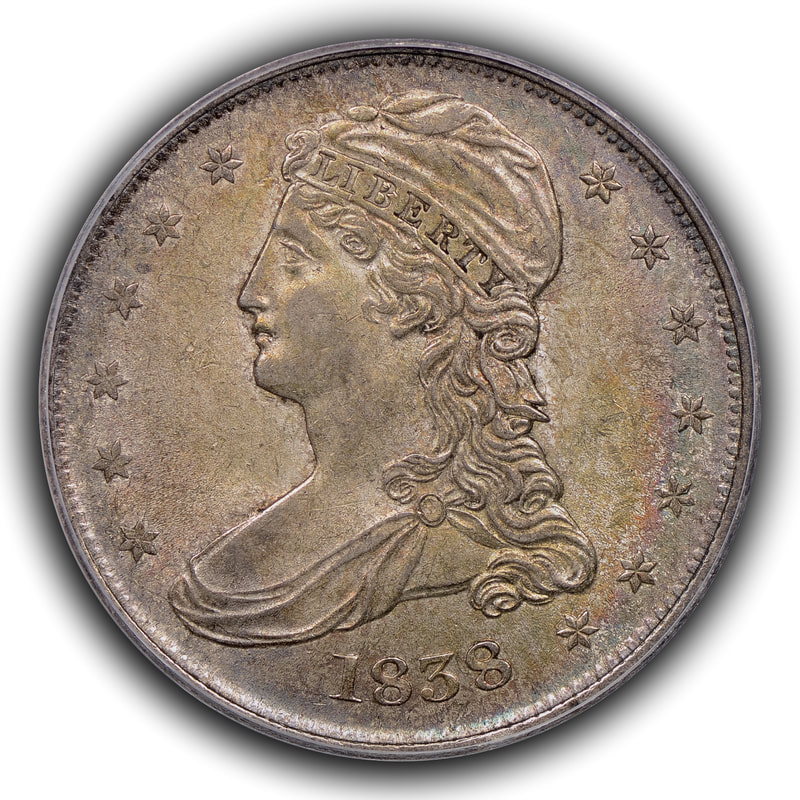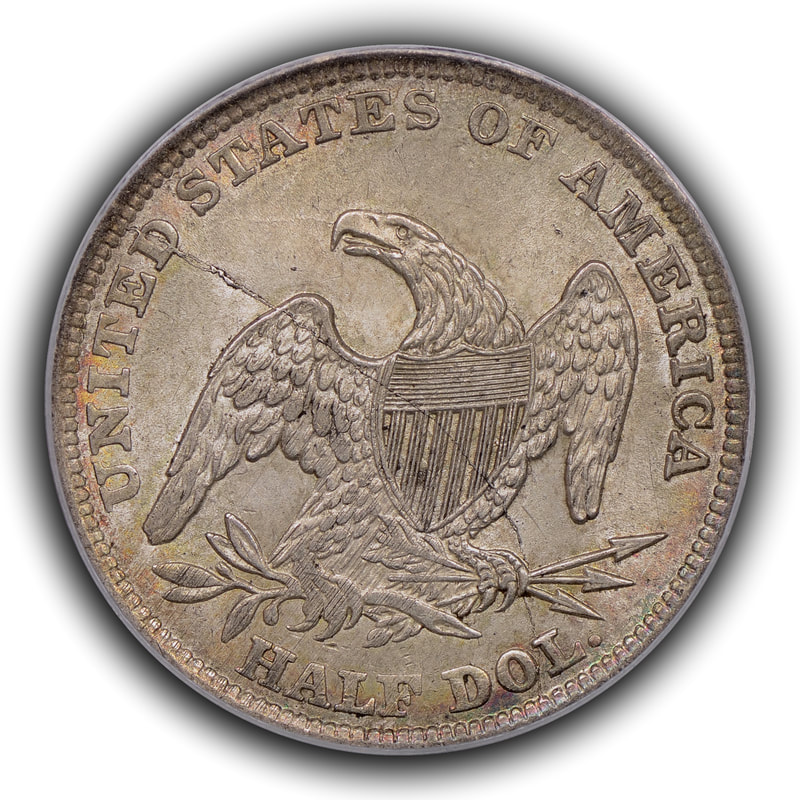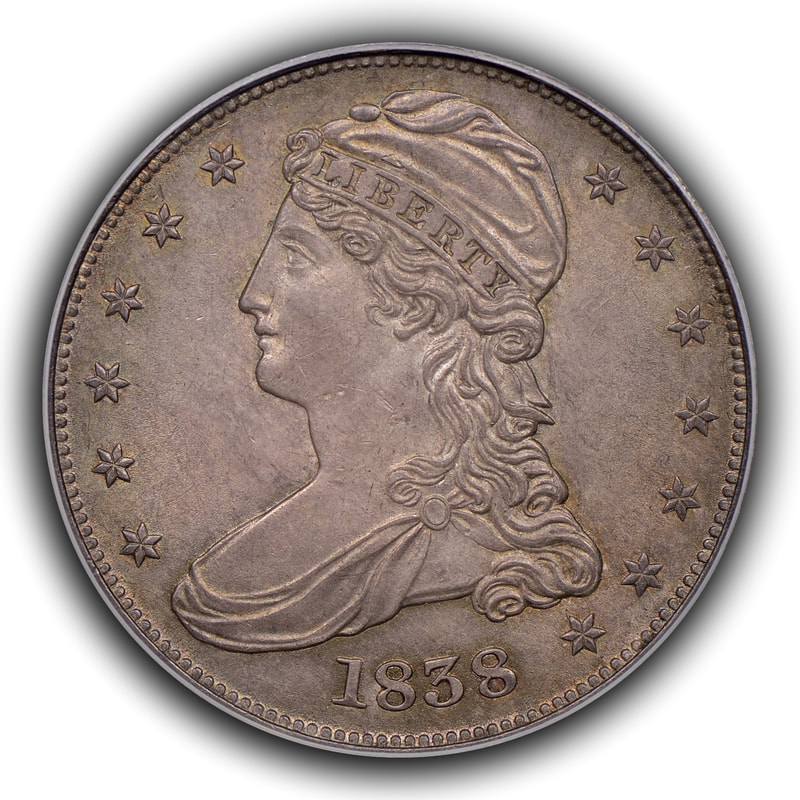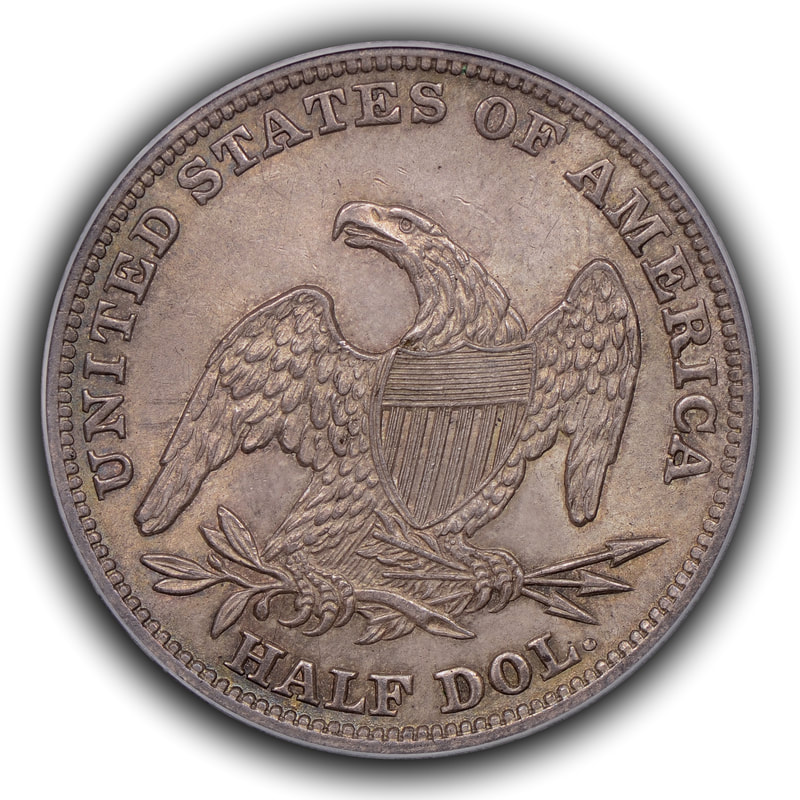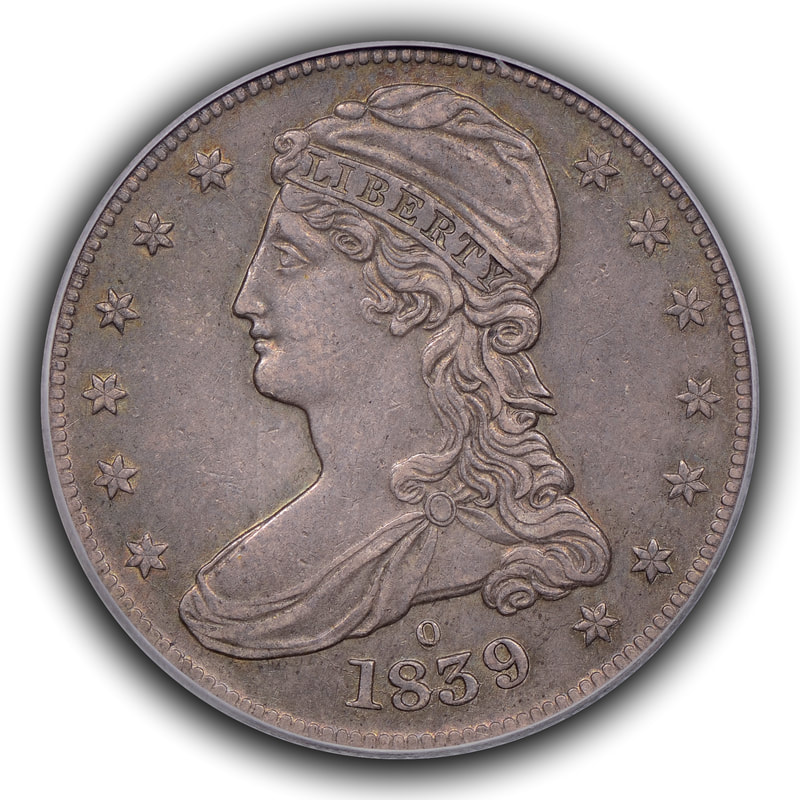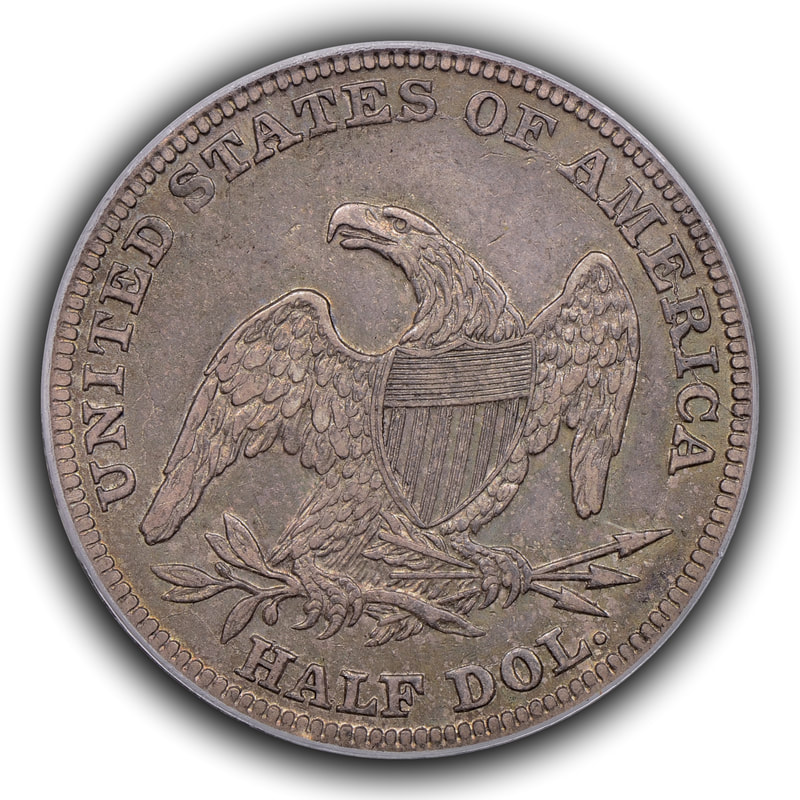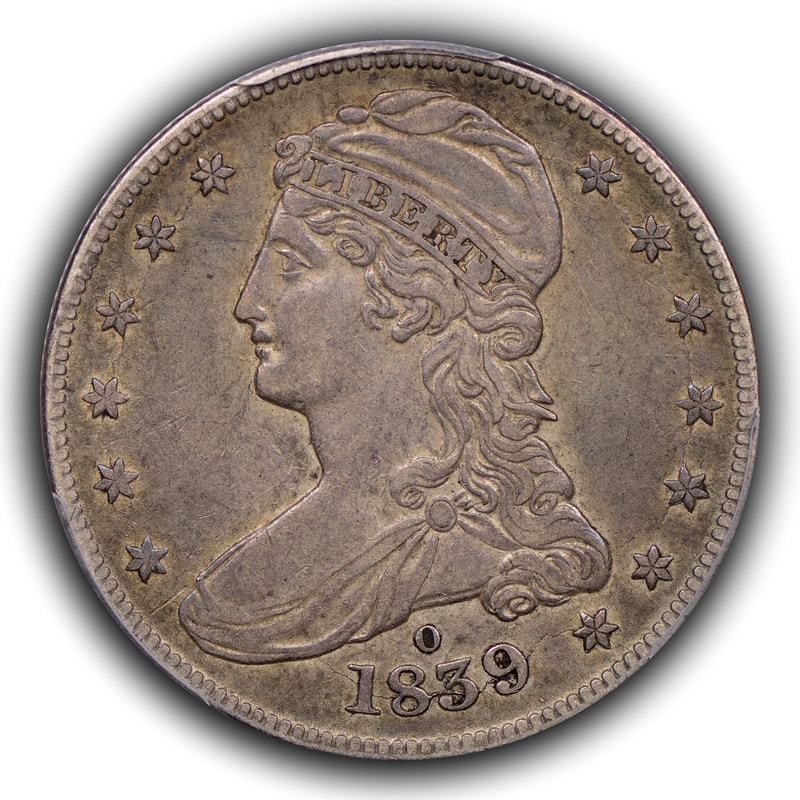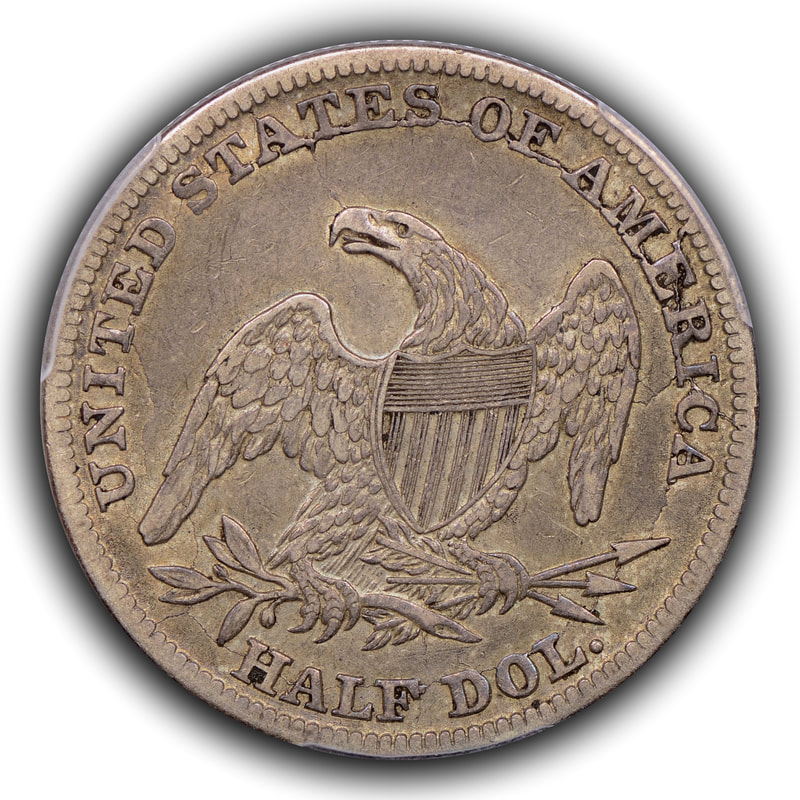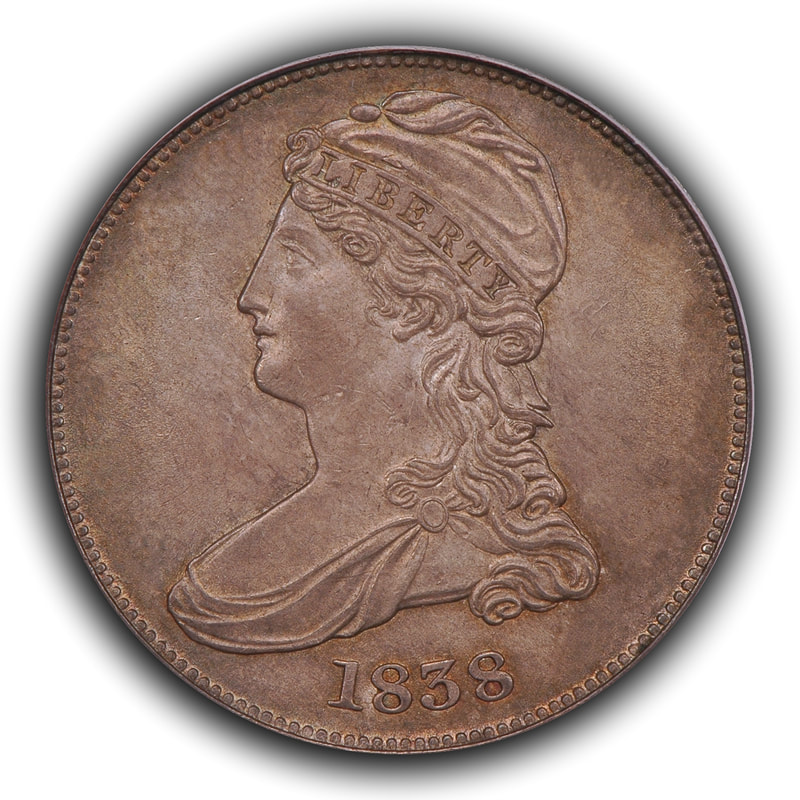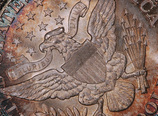The Rolling Stones Walk Into a Bar with Five Reeded Edge Half Dollars and Get...SHATTERED!
I was a teenager in 1978 when the Rolling Stones released “Some Girls”. On that album was a track that many consider the Stone’s interpretation of the early punk scene and it was titled “Shattered”. Truly, I know of no one who would consider this song to be either lyrically or musically deep, but I have historically found the beat to be infectious (or, to some, no doubt relentless, incessant or annoying as all get-out) and every time I look at RE half dollars with cracked dies the song pops into my head. Perhaps this is my 1970s numismatic curse, but I will happily pass it along to you and share my little slice of what many might consider a numismatic backwater. Excellent reading, images, diagnostics and background information can be obtained in the definitive work on the series “A Registry of Die Varieties of Reeded Edge Half Dollars 1836-1839” by Dick Graham with Introduction by Thomas Bush.
1838 GR-1 (JR-1)
This coin has cracks that are cool as all get-out. The obverse has a crack that starts between stars 5 and 6, but nearer star 6, which swoops down into the forehead of Ms. Liberty just above her eye, travels through the T of LIBERTY in the headband and exits through the left portions of star 7 out through the rim. It is paired with a reverse die that has a massive set of cracks that intersect within the eagle near the junction of the body, wing and leg. One crack starts from the rim, goes through the T in UNITED, travels toward and into the wing before turning dramatically downward to exit through the arrow feathers, tip of the claw and between OL in DOL to the rim. The second major crack enters the other side of the reverse between the RI in AMERICA, goes through the near wing, bisects the shield and then meets up with the previous crack to split the reverse into three distinct segments. This coin was purchased in 2007 and is a PCGS OGH.
1838 GR-1 (JR-1)
This coin has cracks that are cool as all get-out. The obverse has a crack that starts between stars 5 and 6, but nearer star 6, which swoops down into the forehead of Ms. Liberty just above her eye, travels through the T of LIBERTY in the headband and exits through the left portions of star 7 out through the rim. It is paired with a reverse die that has a massive set of cracks that intersect within the eagle near the junction of the body, wing and leg. One crack starts from the rim, goes through the T in UNITED, travels toward and into the wing before turning dramatically downward to exit through the arrow feathers, tip of the claw and between OL in DOL to the rim. The second major crack enters the other side of the reverse between the RI in AMERICA, goes through the near wing, bisects the shield and then meets up with the previous crack to split the reverse into three distinct segments. This coin was purchased in 2007 and is a PCGS OGH.
1838 GR-4 (JR-16)
Some might think this coin shares the same reverse die as the GR-1 shown earlier, but indeed, they are different. The obverse crack is minor on this coin and travels from the tip of Ms. Liberty’s bust to the rim just below star 1. However, the reverse has a very thick, cool, lumpy crack coming from the rim through the D in UNITED and diagonally through the upper portion of the wing into the center of the shield before turning downward slightly to arc through the arrows, a claw and through or between OL in DOL before exiting the rim. Additionally, there is a fine crack from the eagle’s beak to S1 that almost appears to leave the reverse in two planes. This particular coin also exhibits very strong roller marks around 7:00 o’clock on the reverse that extend toward the center of the reverse and result in less detail as-struck in this portion of the design. I think they are a cool artifact of the US Mint and its early struggles with the then new steam press while others may find the roller marks distracting. Some die marriages are more commonly found with these planchet roller streaking marks while others are generally not known with this feature. This coin is also in a PCGS OGH and was obtained in 2012.
Some might think this coin shares the same reverse die as the GR-1 shown earlier, but indeed, they are different. The obverse crack is minor on this coin and travels from the tip of Ms. Liberty’s bust to the rim just below star 1. However, the reverse has a very thick, cool, lumpy crack coming from the rim through the D in UNITED and diagonally through the upper portion of the wing into the center of the shield before turning downward slightly to arc through the arrows, a claw and through or between OL in DOL before exiting the rim. Additionally, there is a fine crack from the eagle’s beak to S1 that almost appears to leave the reverse in two planes. This particular coin also exhibits very strong roller marks around 7:00 o’clock on the reverse that extend toward the center of the reverse and result in less detail as-struck in this portion of the design. I think they are a cool artifact of the US Mint and its early struggles with the then new steam press while others may find the roller marks distracting. Some die marriages are more commonly found with these planchet roller streaking marks while others are generally not known with this feature. This coin is also in a PCGS OGH and was obtained in 2012.
1838 GR-11 (JR-3)
This coin exhibits an early die state (EDS) for the obverse die with three thin, fine cracks from the tip of Ms. Liberty’s bust to the rim below star one, through the base of the date and from the rim through star twelve and into the lowest hair curl. This obverse is paired with a VEDS reverse that is considered a prime die state (no die cracks visible). Later die states show additional and more severe cracks on both obverse and reverse. A third PCGS OGH coin, which was purchased in 2008.
This coin exhibits an early die state (EDS) for the obverse die with three thin, fine cracks from the tip of Ms. Liberty’s bust to the rim below star one, through the base of the date and from the rim through star twelve and into the lowest hair curl. This obverse is paired with a VEDS reverse that is considered a prime die state (no die cracks visible). Later die states show additional and more severe cracks on both obverse and reverse. A third PCGS OGH coin, which was purchased in 2008.
1839-O GR-1 (JR-1)
Truly, I consider this coin to perhaps be my favorite regular issue of my little accumulation of this quirky series and those who are willing to enter this niche will find out very quickly how difficult this coin can be when certain standards are in place. There are myriad die cracks on this coin that are most easily seen on the obverse if one looks at the lower portion of the numbers in the date. This crack enters the lower portion of the bust, exits to join up with star one and then dances lightly around the obverse to join the remaining stars. The reverse cracks are easier to visualize and might start as a break in from the rim at 7:00 o’clock between a pair of olive leaves. The crack then splits with one avenue going up through the leaves, the wingtip, under UNI of UNITED before entering the adjacent letter T and traversing the remainder of the legend before exiting the rim at the C of AMERICA. The other avenue of the crack mentioned previously goes through HALF DOL and into the arrow tips. This is a MDS example.
Truly, I consider this coin to perhaps be my favorite regular issue of my little accumulation of this quirky series and those who are willing to enter this niche will find out very quickly how difficult this coin can be when certain standards are in place. There are myriad die cracks on this coin that are most easily seen on the obverse if one looks at the lower portion of the numbers in the date. This crack enters the lower portion of the bust, exits to join up with star one and then dances lightly around the obverse to join the remaining stars. The reverse cracks are easier to visualize and might start as a break in from the rim at 7:00 o’clock between a pair of olive leaves. The crack then splits with one avenue going up through the leaves, the wingtip, under UNI of UNITED before entering the adjacent letter T and traversing the remainder of the legend before exiting the rim at the C of AMERICA. The other avenue of the crack mentioned previously goes through HALF DOL and into the arrow tips. This is a MDS example.
1839-O GR-1 (JR-1)
A second example of the same die pair, but a much later die state example with heavier cracks through the date as well as a long, arcing crack that joins the left-most stars to the right-most stars via Ms. Liberty’s cap. At this point the obverse die is cracked to the point that it appears to create multiple planes. Similarly, the reverse has degraded to such a degree that the fine cracks seen previously are now thick with blobs that have deformed some of the peripheral letters. The eagle’s beak now has a crack that joins A1 and threatens to shatter the reverse entirely. This is an example of a VLDS coin.
A second example of the same die pair, but a much later die state example with heavier cracks through the date as well as a long, arcing crack that joins the left-most stars to the right-most stars via Ms. Liberty’s cap. At this point the obverse die is cracked to the point that it appears to create multiple planes. Similarly, the reverse has degraded to such a degree that the fine cracks seen previously are now thick with blobs that have deformed some of the peripheral letters. The eagle’s beak now has a crack that joins A1 and threatens to shatter the reverse entirely. This is an example of a VLDS coin.
And finally, enjoy the last quirky piece…
